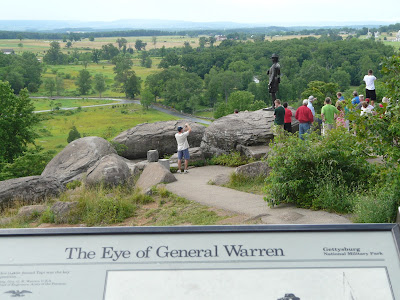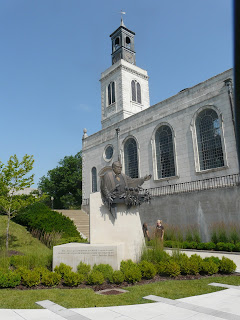 |
Mary Washington's home |
We’re headed down from Baltimore to Williamsburg, Virginia.
On the way, we stop in Fredericksburg’s Historic Section. Our first stop was
Mary Washington’s home. It was bought by her son, George and expanded to house
his mother in style at age 64. She ended up living there for 17 more years. The
house while simple also was quite large, especially for a single woman. She had
a large formal parlor on one side of the house, only opened up when she was
entertaining. On the other side was her bedroom/living room and upstairs were
three small bedrooms for guests. The house had a few of her possessions, but
was mostly filled with period pieces.
 |
Rising Sun Tavern |
The best spot of the day was the Rising Sun Tavern. This
tavern was run by one George Washington’s brothers for five years or so. The
tour explained how mostly men would stay at the inn. The gentleman (staying
with a meal cost about 2 days wages) would share a bed, while the commoners
would have a hay comforter with no blankets. Women had a separate room where
they would read or do their handy work. Generally, the women had to get up
about 2 AM to be ready for the carriage that would leave at 4 AM to make the
next tavern about 15 miles away by nightfall. The best part of the tour,
however, was learning the why’s behind many common expressions: You could play
cards with a deck of 52 cards, 51 cards were free, but there was a tax on the
ace of spades. So many played with just 51 cards: “he’s not playing with a full
deck”. The ale was poured in a pewter mug with a glass bottom: “Here’s looking
at you” as you drank and could see through the bottom. When the British would
impress new seaman, they often would put shillings in the bottom of the cup,
and when you drank from it, they could impress you, since you had accepted the
king’s money: “bottoms up” was the call to make sure there were no coins in the
bottom. At night, your boots would be shined, at the time, both boots were
identical and by wearing them on one foot or the other the boot would be
shaped. “Putting your right foot forward” implied that the right boot was hung
upright.
 |
James Monroe Museum |
















